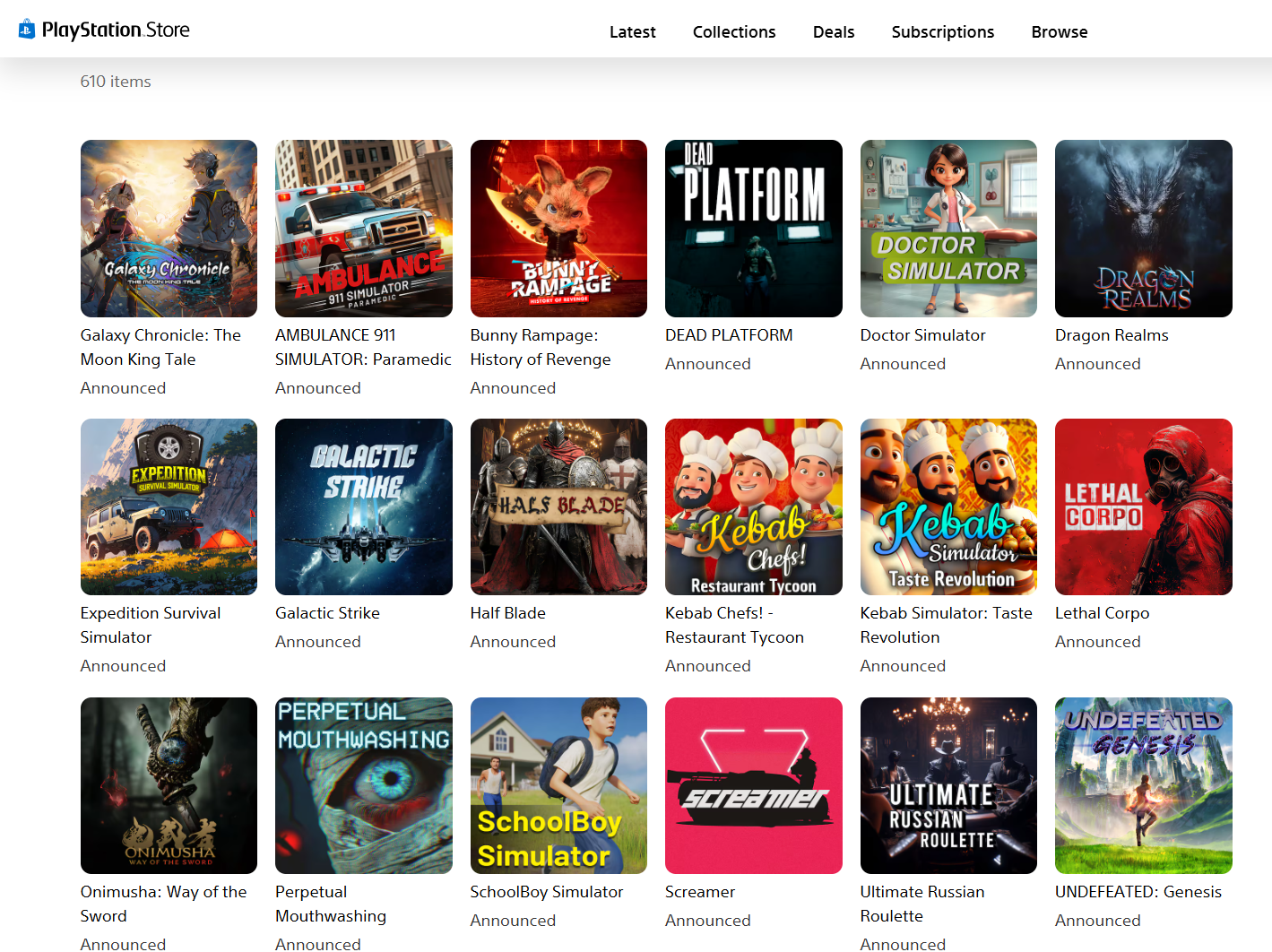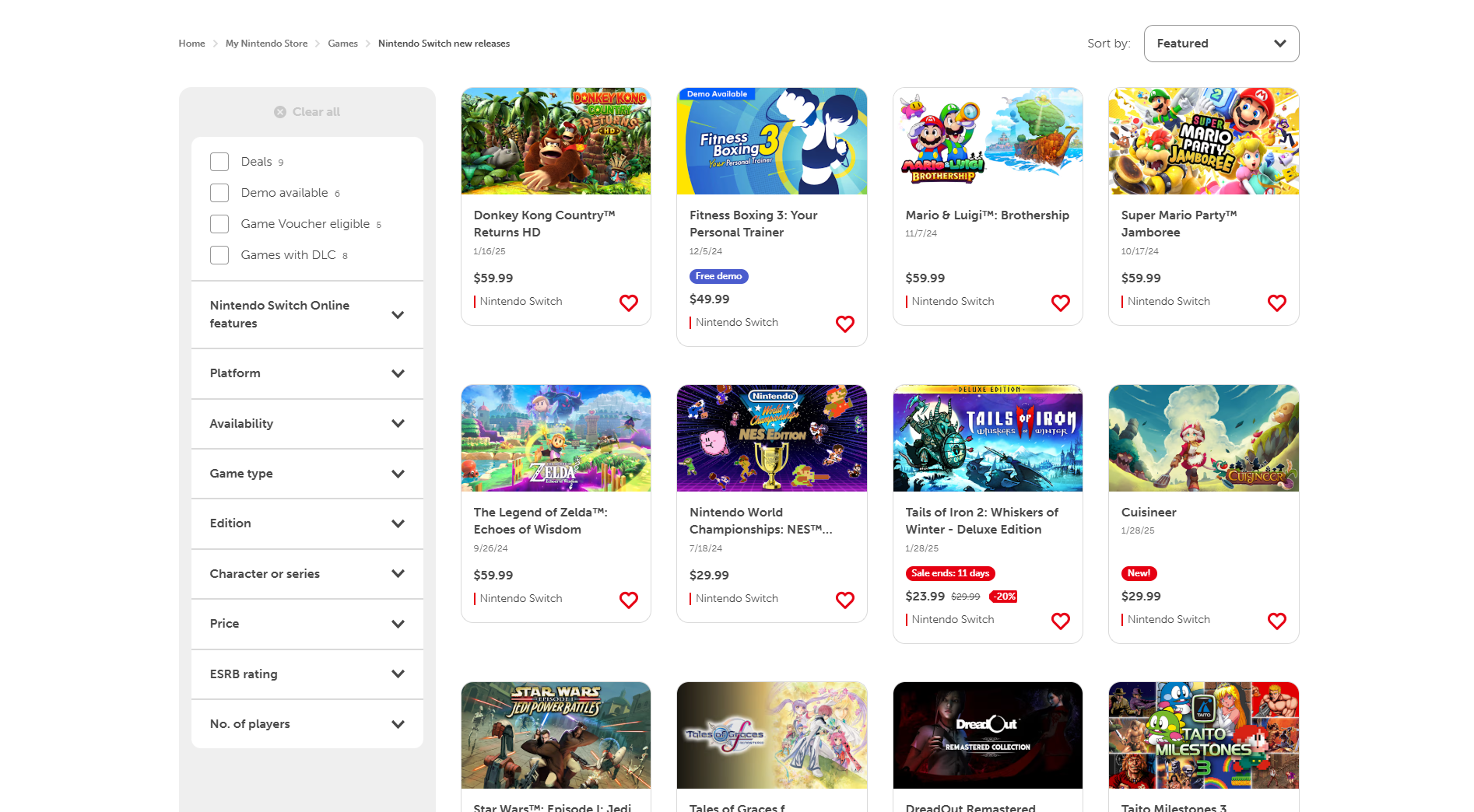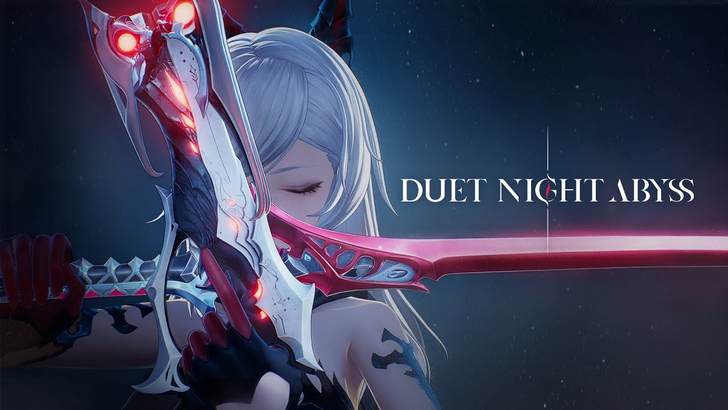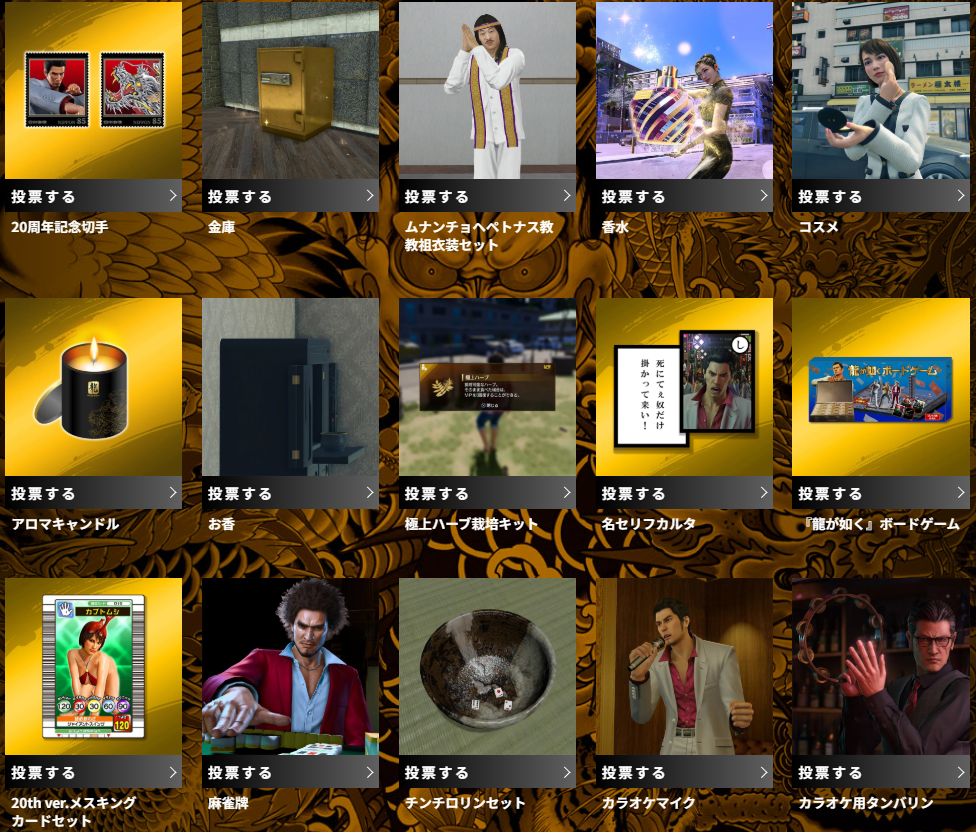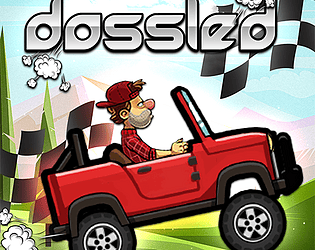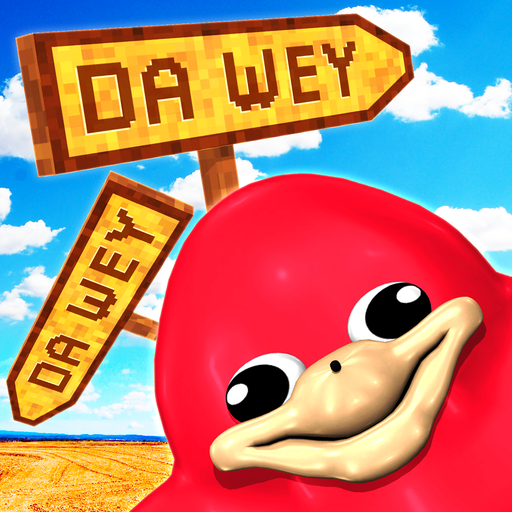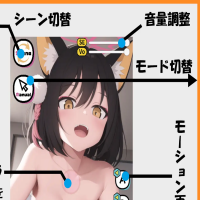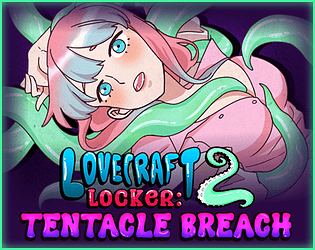The PlayStation Store and Nintendo eShop are experiencing an influx of low-quality games, often described as "slop," raising concerns among users. These games, frequently simulation titles, utilize generative AI for misleading marketing materials and often bear striking resemblance to popular titles, sometimes even directly copying names and themes. This issue, initially more pronounced on the eShop, has recently spread to the PlayStation Store, particularly impacting the "Games to Wishlist" section.
The problem isn't merely the presence of "bad" games; it's the overwhelming quantity of nearly identical, low-effort titles flooding the stores, obscuring legitimate releases. These games often feature poor controls, technical issues, and limited gameplay, failing to live up to their advertised appearances. A small number of companies appear responsible for this surge, making them difficult to identify and hold accountable due to limited online presence and frequent name changes.
User complaints have increased, particularly regarding the eShop's deteriorating performance due to the sheer volume of games. This investigation explores the reasons behind this phenomenon, comparing the experiences on Steam, Xbox, PlayStation, and Nintendo Switch stores.
The Certification Process: A Key Difference
Interviews with eight game development and publishing professionals (all requesting anonymity) revealed insights into the game release process across the four major storefronts. The process generally involves initial platform approval, followed by detailed forms describing the game's technical aspects. "Cert" (certification) then checks for compliance with platform requirements, legal issues, and ESRB rating accuracy. Age ratings are strictly enforced, with discrepancies leading to immediate release delays.
A common misconception is that certification equates to a quality assurance (QA) check. It doesn't; QA is the developer's responsibility. Certification focuses on technical compliance with hardware specifications. Developers often receive limited feedback on submission failures, particularly from Nintendo.
Store Page Review: A Variable Process
While all platforms require accurate game representation in screenshots, enforcement varies significantly. Reviews primarily focus on avoiding conflicting imagery and language consistency. One instance highlighted Nintendo's rejection of screenshots that were unrealistic for the Switch's capabilities. While Nintendo and Xbox review all store page changes, PlayStation performs a single check near launch, and Valve's review is limited to the initial submission.
The platforms perform some level of diligence in verifying store information accuracy, but this is often post-submission, relying on developer honesty. The definition of "accurate representation" is flexible, allowing many games to slip through. Penalties for misleading information are typically limited to content removal, though delisting or developer removal is a potential consequence. None of the console storefronts have specific rules regarding generative AI use in games or marketing materials, although Steam requests disclosure.
Why the Discrepancy?
The differing approaches to developer vetting explain the disparity in "slop" prevalence. Microsoft vets games individually, while Nintendo, Sony, and Valve vet developers. This allows for easier mass releases on the latter platforms once initial approval is granted. Xbox's game-by-game approach makes it less susceptible to the problem. Nintendo's developer-based system, combined with its less stringent review process, makes it particularly vulnerable to exploitation. Developers described strategies to maintain high visibility on the eShop by repeatedly releasing similar bundles. PlayStation's "Games to Wishlist" sorting by release date also contributes to the issue.
While generative AI is a factor, it's not the primary cause. The games themselves are created by individuals, and generative AI cannot independently produce a game that passes certification. Xbox, despite its potential future use of AI, currently shows the least "slop."
Discoverability and Curation: A Contributing Factor
Discoverability issues exacerbate the problem. Xbox's curated store pages limit user exposure to low-quality games. PlayStation's "Games to Wishlist" sorting, however, promotes games with vague release dates, resulting in prominent placement of low-quality titles. Steam, despite its own discoverability challenges, avoids this issue due to its high volume of new releases, diluting the impact of low-quality entries. Nintendo's unsorted "New Releases" section contributes significantly to the problem.
The Path Forward: Uncertainties and Concerns
Users are urging Nintendo and Sony to address the issue, but responses from the companies have been absent. Developers express pessimism about immediate solutions, suggesting that Nintendo's approach might only marginally improve with the Switch 2. However, the web browser version of the eShop is considered functional, offering a potential model for improvement. Sony has taken action against similar issues in the past, suggesting potential future intervention. Overly aggressive filtering, as demonstrated by the "Better eShop" project, risks harming legitimate games. Concerns exist that stringent regulation could inadvertently target quality software. The human element in the review process should be considered, as differentiating between various levels of game quality is challenging. The platforms are attempting to balance allowing less-than-stellar games while preventing exploitative practices.
